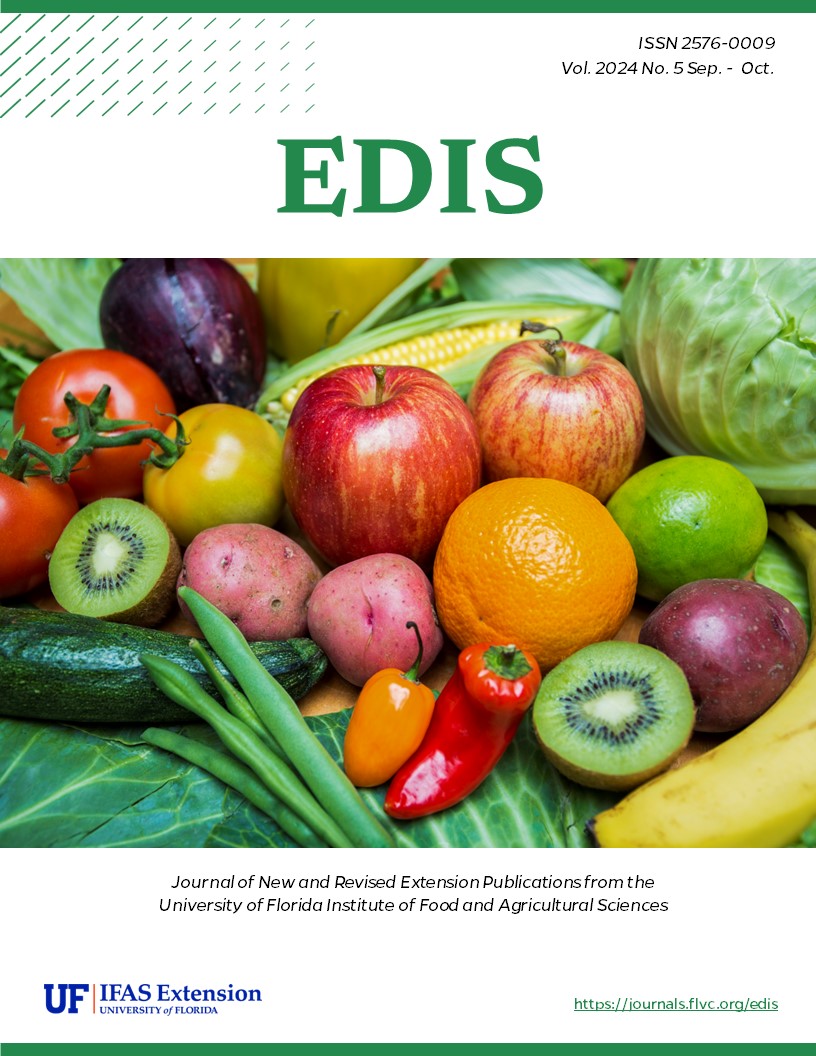Abstract
In this publication, we present an overview of stakeholder concerns regarding hydrilla management, synthesizing insights gathered from the largest state-wide survey of Florida residents about invasive aquatic plant management in the state’s public waters. Our objective is to equip decision-makers, including agencies like FWC, with valuable insights. By understanding stakeholder concerns, decision-makers can formulate policies for the effective management of aquatic invasive species that garner public support.
References
Enloe, S. F., L. A. Gettys, J. Leary, and K. A. Langeland. 2019. “Hydrilla Management in Florida Lakes: SS-AGR-361/AG370, Rev. 11/2019.” EDIS 2019 (November). Gainesville, FL:7. https://doi.org/10.32473/edis-ag370-2019
Florida Fish and Wildlife Conservation Commission. 2022. Hydrilla. My FWC. Retrieved January 13, 2023, from https://myfwc.com/wildlifehabitats/habitat/invasive-plants/weed-alerts/hydrilla/#:~:text=Hydrilla%20canopies%20produce%20ideal%20breeding,as%20boating%2C%20swimming%20and%20fishing.
Florida Fish and Wildlife Conservation Commission. 2022. (rep.). Annual Report of Activities Conducted under the Cooperative Aquatic Plant Control Program in Florida Public Waters for Fiscal Year 2020–2021. Retrieved January 13, 2023, from https://myfwc.com/media/28949/annualreport20-21.pdf.
Gettys, L. A., and S. F. Enloe. 2019. “Hydrilla: Florida’s Worst Submersed Weed: SS-AGR-400/AG404, 2/2016.” EDIS 2016 (3). Gainesville, FL:7. https://doi.org/10.32473/edis-ag404-2016.
Hiatt, D., K. Serbesoff‐King, D. Lieurance, D. R. Gordon, and S. L. Flory. 2019. “Allocation of invasive plant management expenditures for conservation: Lessons from Florida, USA.” Conservation Science and Practice 1(7). https://doi.org/10.1111/csp2.51
Hoyer, M. V., W. T. Haller, J. Ferrell, and D. Jones. 2022. “Legacy Herbicides in Lake Sediment.” Research Guide. https://plants.usda.gov/home/noxiousInvasiveSearch
Leary, J. 2020. “Working Harder to Make Hydrilla Harvesting Work.” Blog. UF/IFAS Center for Aquatic and Invasive Plants. http://blogs.ifas.ufl.edu/caip/2020/04/26/working-harder-to-make-hydrilla-harvesting-work/ (accessed 4.27.22).
Weber, M., L. Wainger, N. Harms, and G. Nesslage. 2021. The Economic Value of Research in Managing Invasive Hydrilla in Florida Public Lakes.” Lake and Reservoir Management 37 (1): 63–76 https://doi.org/10.1080/10402381.2020.1824047
USDA NRCS. 2015. Introduced, invasive, and noxious plants: Federal Noxious Weeds. United States Department of Agriculture Natural Resources Conservation Service. Accessed December 7th, 2022, from https://plants.usda.gov/home/noxiousInvasiveSearch

This work is licensed under a Creative Commons Attribution-NonCommercial-NoDerivatives 4.0 International License.
Copyright (c) 2024 UF/IFAS

